Crisis Discourse, Utopian Expectations, and Accountability Failures
“It is rather the same thing that is happening to the English language. . . .
Barack Obama personifies the power of personality in politics and the value of articulating a compelling vision that resonates with many voters in the US and other global citizens. For Obama’s presidential campaign, the refrain that worked was driven by two words and concepts, “hope” and “change.” From healthcare, to war, to education reform, however, the Obama administration is proving that political discourse is more likely to mask intent—just as Orwell warned through his essays and most influential novel 1984, the source of the term “double- speak” that characterizes well Obama’s and Secretary of Education Arne Duncan’s public comments on education reform. They mask the programs promoted and implemented by the Department of Education.
Here, I will explore the neoliberal assumptions driving the language and policies related to education that came from the Obama administration and guided by Duncan. The examination will unpack Duncan’s speeches and the realities of the ideologies the administration supports through policy and public messages.
The dynamic established through crisis discourse about the public education system, combined with Utopian expectations for those schools, helps mask the neoliberal assumptions embedded in what Freire (1998) calls “the bureaucratizing of the mind”: “The freedom that moves us, that makes us take risks, is being subjugated to a process of standardization of formulas, models against which we are evaluated” (p. 111).
The Lingering Legacy of Crisis Discourse and Utopian Expectations
Obama ascended to the presidency on messages of hope and change, and while the first year in office was dominated by economic challenges and a health care initiative, Leonhardt (2010) declared the passage of health care reform under Obama as “the centerpiece of his deliberate effort to end what historians have called the age of Reagan.” If the Obama administration is seeking change, and part of that change is directly aimed at the momentum of the Reagan administration, then we might expect that change to include education policy. But so far there is little to encourage hope for educational change—based on both the messages and the changes to policy.
First, the crisis discourse and Utopian expectations for the presidency and education are historical patterns—not simply elements of the past thirty years or the more recent years of Obama’s candidacy and presidency. Public education has been called a “‘dragon. . .devouring the hope of the country as well as religion. [It dispenses] ‘Socialism, Red Republicanism,
Universalism, Infidelity, Deism, Atheism, and Pantheism—anything, everything, except religion and patriotism,’” explains Jacoby (2004, pp. 257-258). We have a long legacy of judging the quality of our public schools based on one data point such as graduation rates (Get adjusted, 1947). We must recognize that demonizing public schools (above, from the mid-1800s and 1947) is the way we discuss and view schools in the U. S.— all steeped in crisis language and Utopian expectations.
For example, Vartain Gregorian, President of the Carnegie Corporation of New York, claims that the state of literacy in the U. S. “should [be] view[ed]. . .as a crisis, because the ability to read, comprehend, and write—in other words, to organize information into knowledge—can be viewed as tantamount to a survival skill” (Graham & Herbert, 2010, p. 2). The study is immediately couched within a “crisis” and finally the action needed is raised to Utopian importance that is overwhelming:
Those who enrich themselves by learning to read with understanding and write with skill and clarity do so not only for themselves and their families, but for our nation as well. They learn in order to preserve and enhance the record of humanity, to be productive members of a larger community, to be good citizens and good ancestors to those who will follow after them. In an age of globalization, where economies sink or swim on their ability to mine and manage knowledge, as do both individual and national security, we cannot afford to let this generation of ours and, indeed, any other, fall behind the learning curve. (p. 2)
Even those with the best intentions overstate the issues facing education and the promises that education can and should fulfill.
Further, the popular psyche and the political discourse that inform the public are both wed to deep cultural commitments to a neoliberal view of the world that trusts the rugged individual and the private sector over communities, cooperation, and government (Giroux, 2010a). While a scholarly and evidence-based view of how the world works may present a more nuanced and complex picture, the popular assumptions and then the political rhetoric needed to court the public are both necessarily simplified (Gardner, 1996). In other words, Americans believe in the rugged individual, including the ability of each student through hard work to lift himself or herself up by the bootstraps. The political elite fuel these assumptions in order to preserve the status quo that provides them their political power.
Few ask if rugged individualism is an accurate mythology to live by. Therefore, the clichés of popular discourse including “lift yourself up by the bootstraps” and “a rising tide lifts all boats” are not trivial. These ideals color significantly how we view education along with the role of teachers and students. A central flaw in libertarian and conservative commitments to rugged individualism is normalizing exceptionality: All people in poverty must be lazy since we can identify one person who rose above poverty to succeed.
Within American neoliberal commitments, then, the popular assumptions about school include viewing education as preparation for work (indoctrinating students into behaviors conducive to workforce efficiency—punctuality, compliance, and loyalty) and accepting mechanistic approaches to teaching and learning (supporting the uncritical acceptance of testing as a valid accountability tool for schools, teachers, and students). These commitments and assumptions shift all of the focus and blame on each individual in society (implying that people living in poverty somehow deserve their status), on each student in school (implying that students fail only because they are somehow insufficient, either in effort or genetically), and on each teacher (implying that teachers are culpable in student failure because they are unmotivated as a result of public education being a monopoly).
Further, most people assume a direct and singular cause-and-effect relationship between a teacher and a student. Assuming that teachers can cause a person to learn along with believing all students can choose to learn (despite the impact of their lives on that choice) is at the root of our pursuit of mechanistic accountability paradigms—such as the increasing call to link teacher pay and status to the test scores of their students, including Race to the Top criteria.
Few differences exist between the Time article on drop-outs (Get adjusted, 1947) and the report on graduation rates championed by Colin Powell (Swanson, 2008) in terms of the language and the assumptions that schools and teachers are somehow the sole and direct causes of drop-out rates. What both essays fail to exposes is how schools expose larger social patterns of inequity. For decades, we have labeled schools failures based on isolated data points— commonly drop-out rates or SAT scores—without considering the quality of the data or the relevance of the data as they relate to the conclusions drawn.
This public dynamic has provided fertile ground for manipulative and misguided political discourse and policy—well represented by the connection between Reagan and Obama. Holton (2003), a member of the commission formed under the Reagan administration that produced “A Nation at Risk” (The National Commission on Excellence in Education, 1983), years after the experience offered insight to the influence of political agendas on educational reform:
We met with President Reagan at the White House, who at first was jovial, charming, and full of funny stories, but then turned serious when he gave us our marching orders. He told us that our report should focus on five fundamental points that would bring excellence to education: Bring God back into the classroom. Encourage tuition tax credits for families using private schools. Support vouchers. Leave the primary responsibility for education to parents. And please abolish that abomination, the Department of Education. (n.p., electronic)
The distraction created by “A Nation at Risk” and the subsequent accountability era lingering today have allowed critical evaluations of U. S. public education to remain ignored. Public schools in the U. S. fail students by perpetuating neoliberal norms that also support the ruling elite, including Reagan and Obama. Public schools reflect and reinforce social inequities through tracking, teacher assignments, authoritarian discipline practices, narrow standards-based high-stakes testing, and unethical teacher accountability mandates—all of which are central to bureaucratic reform policies begun under Reagan and continued through Obama.
This pattern of misinformation escalated throughout the 1980s, 1990s, and 2000s, resulting in the “Texas Miracle” becoming NCLB. However, as Bush was promoting NCLB, evidence revealed that the “Texas Miracle” was as much political manipulation as “A Nation at Risk” (Klein, et al., 2000). Parallel to the public ignoring the evidence that Texas had produced no miracles, students themselves were caught in the distorted view of the power of accountability and the reality of being educated once moving on to college (Hacker, 2009; Thomas, 2004).
The evidence did not matter because the power of language and assumptions about accountability are deeply entrenched in the American psyche and reinforced by educational research being poorly reported and thus rarely well communicated to lay people (Molnar, 2001; Yettick, 2009). As Gardner (1996) shows about leaders, political discourse is most effective when it speaks to the black-and-white assumptions of the electorate. Schools in crisis, Utopian expectations for schools, and accountability all match the five-year-old mind of the popular psyche that is culturally committed to a neoliberal view of the world. Then, while Obama has achieved the mantle of changing the age of Reagan through health care reform, should we expect a sea change in the discourse, expectations, and policies regarding education under Obama and Duncan?
Educational Change and Status Quo Under Obama
Chapman (2010) offered a nuanced and confessional piece on educational reform that parallels educational thinkers such as Ravitch (2010) in acknowledging the flaws inherent in many of the most vocal calls for school reform—including school choice. After noting the failure of Milwaukee school choice to produce academic achievement better than the public schools over twenty years, Chapman admits, “This is a surprise to anyone who originally supported the voucher idea—as I did. But it’s entirely consistent with the record elsewhere.” Chapman and Ravitch have had their realizations ignored, however, since their messages run against the tide of popular faith in choice, competition, and accountability.
Ravitch (2010), now rejecting accountability and school choice schemes to drive life in K-12 classrooms, notes that the appointment of Duncan over Darling-Hammond was a signal of Obama’s contrasting shift away from progressive approaches to education and toward “a ‘real’ reformer who supported testing, accountability, and choice” in Duncan (p. 22). Further, Ravitch focuses on the significance of Duncan as the leading voice for education:
This rhetoric represented a remarkable turn of events. It showed how the politics of education had been transformed. . . .Slogans long advocated by policy wonks on the right had migrated to and been embraced by policy wonks on the left. When Democrat think tanks say their party should support accountability and school choice, while rebuffing the teachers’ unions, you can bet that something has fundamentally changed in the political scene. (p. 22)
Duncan’s discourse and the subsequent policies of the Obama administration do signal a change for education. However, this change has continued the political and cultural elite ignoring critical perspectives of educational reform, moving away from progressive commitments to public schools, and embracing neoliberal language and approaches to education reform (Giroux, 2010a). These changes for Democratic leadership related to education have all occurred within a larger popular discourse framing Obama as a socialist, a false claim that blocks the public from recognizing his total support for corporatist education appointments and policies.
Two aspects of these events are important here. First, when a president names a Secretary of Education, that appointee becomes the face, voice, and authority on education in the U. S.; thus, what the Secretary of Education says and how those comments are framed matter in the broader public discourse in direct and indirect ways. Next, the commentary coming from the Secretary of Education speaks to neoliberal norms and assumptions that are rarely challenged, again related to assumptions about accountability, graduation rates, and the value of education in the market place.
Beyond the problem with political discourse triggering uncritical assumptions about statistics, a larger failure of political and popular discourse is the recurring endorsement of accountability. Vecsey (2010) wrote about Duncan’s January 2010 talk, “Wielding some sharp verbal elbows, Duncan turned around and demanded that colleges do a better job of keeping and educating their players. Or else.” In other words, the Secretary of Education, as a real reformer, suggested direct penalties for colleges not complying, even though the Department of Education has no authority for his standard. When high school students who drop out or college basketball players who leave college for the NBA are making informed choices, the focus of accountability on the schools is misguided and invalid. But the current distorted accountability dynamic also hides the reality that our public schools often fail students through corporatist practices that in fact do drive students from the exact schools that could benefit their lives.
Then, in the third debate with McCain, 15 October 2008, Obama championed his support for charters and competition: “Sen. McCain and I actually agree on charter schools. I doubled the number of charter schools in Illinois despite some reservations from teachers unions. I think it’s important to foster competition inside the public schools.”2 “And soon after he entered office,” writes Ravitch (2010), “President Obama heartened charter school advocates by urging state legislatures to remove the caps on charter schools” (p. 145.)
The Obama/Duncan administration has placed the U. S. Department of Education firmly within “[t]he Gates-Broad agenda. . . .The Broad Foundation pursues strategies that would deprofessionalize education, uses bonuses to motivate (or ‘incentivize’) teachers and students, and seeks to replace neighborhood schools with a competitive marketplace of choices” (Ravitch, 2010, p. 217). As Ravitch explores, Obama and Duncan have committed to charter schools— notably “no excuses” schools such as Knowledge Is Power Program (KIPP)—and merit pay for teachers; further, initial policy such as Race to the Top reinforces America’s cultural commitments to neoliberal ideology as reflected in Gates and Michelle Rhee (former Chancellor of DC public schools), who both incorporate the discourse and practices of business to reform schooling.
Directly, Obama’s support for the Harlem Children’s Zone (HCZ) reflects further neoliberal practices hidden beneath his public language. “We may have found a remedy for the achievement gap,” proclaimed Brooks (2009),3 in a piece titled “The Harlem Miracle,” about the Promise Academy of the HCZ. Brooks concluded that Dobbie and Fryer’s (2009) claim that the charter school had closed the achievement gap between blacks and whites proved the reformers right and the educational establishment wrong.
Throughout 2009, and uncritically, HCZ was championed and linked to Obama: “Now the Obama administration seeks to replicate [President and CEO Geoffrey] Canada’s model in 20 cities in a program called Promise Neighborhoods and has set aside $10 million in the 2010 budget for planning. President Obama has frequently singled out the Harlem Children’s Zone, and first lady Michelle Obama recently called Canada ‘one of my heroes’” (Shulman, 2009).
Further, Pallas (2009b) explains that advocates ignore that HCZ students did not close the gap on the Iowa Test of Basic Skills the same year. Making claims that HCZ research provides “a remedy for the achievement gap” overstates for the wider public what the data support; proclaiming “miracle” exposes our flawed Utopian expectations (normalizing the exceptional), not a remedy for closing the achievement gap.
Further, an ignored difference between HCZ schools and public schools is HCZ schools include virtually no English Language Learners (ELL) or special needs students (Ravitch, 2009). Another difference is, although Brooks (2009) discounted the value of low student-teacher ratios, the HCZ schools have one adult for every six children (Schorn, 2006). Furthermore, HCZ schools address the social conditions of children living in poverty, but advocates discount the impact of the social support (Whitehurst, 2010) and champion the most disturbing and least challenged aspect of the Harlem experiment—“no excuses schools” Brooks (2009) explains, “The schools create a disciplined, orderly and demanding counterculture to inculcate middle- class values.”
The claim of “no excuses schools” masks the rise of “new paternalism” schools that embrace oppressive practices in pursuit of raising scores, increasing graduation rates, and improving college attendance—all neoliberal assumptions about education in a free society— while seeking to discredit progressive educational ideologies (Landsberg, 2009; Whitman, 2008). “New paternalism” schools implement the worst aspects of racism and classism, notably that the problems we face are inherently in the children themselves. If we persist in conforming all children to the system, we are ignoring the possible (and likely) flaws in society, standardized testing, and bureaucratic schooling (Giroux, 2005; Kincheloe & Steinberg, 2007; Kincheloe, Steinberg, & Gresson, 1997; Kincheloe, Steinberg, & Hinchey, 1999; McLaren, 2007; McLaren & Farahmandpur, 2005; Thomas & Kincheloe, 2006).
When Obama and Duncan endorse HCZ and other charter schools or choice initiatives— and when that discourse is coupled with programs such as Race to the Top, a program based on faith in competition and not evidence—we are left with the status quo in terms of how we view schools, youth, and school reform. The change we need, the change we hope for should instead confront the assumptions that have driven political discourse and policies for decades.
Ironically, bureaucratic school reform driven by neoliberal assumptions about teaching and learning is distracting the public from the true failures of our system while perpetuating conditions that create schools hostile to the students most in need of public education. Obama and Duncan, then, are speaking for and reinforcing mechanistic practices that are the exact deforming myths (Freire, 2005) that education should empower people to change.
“America’s Economic Salvation”—The Discourse of Education Unchanged
Now, let’s consider the discourse and proposed changes coming from Duncan and the Department of Education. Duncan’s 24 September 2009 speech is key because it was the first in his campaign for reform and based on his self-described “Listening and Learning” tour; the Blueprint for Reform is also a valuable guide for the policies that ultimately contradict the discourse.
Early in his September talk, Duncan (2009) claims about his “Listening and Learning” tour,
I heard their voices—their expectations, hopes and dreams for themselves and their kids. They were candid about their fears and frustrations. They did not always understand why some schools struggle while others thrive. They understood profoundly that great teaching and school leadership is the key to a great education for their kids.
Duncan immediately speaks to hope, linking his education policy to Obama’s campaign, but more important, I believe, is the subtle suggestion that people don’t “understand why some schools struggle while others thrive”—and that most, if not all of student success, is tied to teachers and administrators (and not socioeconomic conditions). Here is a central aspect of the failure of political discourse related to schools: We do know why some schools thrive and others struggle, and we have known for decades—the most powerful connection to academic success is the status of any child’s home (Adamson, et al., 2002; Barton & Coley, 2007, 2009; Basch, 2010; Berliner, 2009; Hirsch, 2007; Kincheloe & Steinberg, 2007; Rothstein, 2010a; Thomas, 2009, 2010b; Wenglinsky, 2007). We also know that the failure occurring inside schools tends to mirror the social stratification of the broader society. Thus, schools reinscribe the social inequities of the culture instead of confronting those inequities (Burris, Welner, & Bezoza, 2009;
Miron, et al., 2010; Peske & Haycock, 2006). Neoliberal assumptions, as they manifest themselves in educational policy and practices, are so corrosive because they reinforce a culture of blaming the people living in poverty for their social status and demonizing children of poverty for their academic failures.
Next, Duncan (2009) follows with Utopian expectations. He places them in the context that we are somehow unaware of why some schools succeed and others don’t: “[E]veryone everywhere shares a common belief that education is America’s economic salvation.” As has been the refrain for decades, school is framed as the sole avenue for economic success of the country, although evidence on the connection is lacking (Bracey, 2004). Duncan continues by characterizing schools as “the one true path out of poverty—the great equalizer that overcomes differences in background, culture and privilege. It’s the only way to secure our common future in a competitive global economy.” “Salvation,” “one true path,” “only way”—Duncan’s words place a impossible burden on schools to overcome the systemic forces that oppress numerous schoolchildren.
When Duncan (2009) turns to the Elementary and Secondary Education Act (ESEA) and the planned revisions to NCLB (which itself is a revision of ESEA), he acknowledges the problems with NCLB and federal influence on educational practices, but he also applauds NCLB “for exposing achievement gaps, and for requiring that we measure our efforts to improve education by looking at outcomes, rather than inputs.” Again, the discourse is compelling in the popular debate about schools, but is flawed as Duncan continues to shine all of the light on school outcomes. Consequently, he keeps in the shadows the powerful social forces propelling oppression in schools and in the wider social world.
Once again, Duncan (2009) joins the refrain that stretches back to the Committee of Ten in the 1890s—calling for raising the bar further so students are prepared for college or careers. Duncan offers statistics interspersed with soaring rhetoric as he begins to suggest how the Obama administration plans to take action and render change. A particularly disturbing element of the speech is when Duncan turns to the work and words of Martin Luther King, Jr. But this speech proves to be a contradiction of discourse and substance as Duncan (2009) reignites the crisis mentality surrounding schools and builds to conflicting points such as these:
Let us build a law that demands real accountability tied to growth and gain both in the individual classroom and in the entire school—rather than utopian goals—a law that encourages educators to work with children at every level, the gifted and the struggling—and not just the tiny percent near the middle who can be lifted over mediocre bar of proficiency with minimal effort. That’s not education. That’s game playing tied to bad tests with the wrong goals.
His crisis discourse is cloaked in Utopian expectations for schools—despite his stated rejecting of “utopian goals”—and tied to resisting a culture of testing while also calling for better tests, stronger accountability, and higher standards.
Weaved into the political discourse, Duncan (2009) identifies educational reform as “the civil rights issue of our generation”—although the talk fails to acknowledge the power of social inequities on the performance of schools and students or takes inventory of the historical failure of the exact actions Duncan endorses throughout the speech. In fact, if urgency should be associated with anything in education, it should be our need to address that our schools often reproduce and increase the inequities of children’s lives outside of schools. Now, from this speech, let’s turn to the Blueprint (U. S. Department of Education, 2010) to see how the discourse becomes policy.
Blueprint for Change?—Status Quo in Sheep’s Clothing
The themes and language of Obama’s opening message to the Blueprint (U. S. Department of Education, 2010) echo Duncan’s speech examined above—the need for world-class schools that produce college-/career-ready students. This is the lightening rod that will supposedly jumpstart the U. S. market economy. And while Obama’s comments acknowledge students’ home and communities, the implication is that schools, with better and higher standards/accountability, can change the society that is failing those people living in poverty. The Blueprint offers five priorities to guide “a re-envisioned federal role in education”:
- “Every student should graduate from high school ready for college and a career, regardless of their income, race, ethnic or language background, or disability status” (U. S. Department of Education, 2010). The first priority focuses on college and career readiness, disregarding that such a narrow standard fails to question if this is even possible or appropriate. The call for “every” student to graduate perpetuates a Utopian expectation, something that can never be achieved. It merely creates only failure by comparison.
- The second priority focuses on teacher and leadership development, including an acknowledgement that high poverty schools need greater equity in teacher assignments, a position well supported by research (Peske & Haycock, 2006). But, once again, this plan fails to address the abundance of evidence showing social forces are more important to student achievement than the quality of teachers or schools (see Hirsch, 2007).
- A continued faith in accountability paradigms is included in the third priority, including, “But in the lowest-performing schools that have not made progress over time, we will ask for dramatic change” (U. S. Department of Education, 2010). The use of “dramatic” reinforces the crisis language embedded in public discourse about schools, and this priority completely disregards that pressure, rewards, and punishment (Kohn, 1996) are inappropriate for addressing needs in high-poverty settings (Fryer, 2010).
- Race to the Top, a competition-based process, and school choice are embraced in the fourth priority. The plans for change in education under Obama always fail to change our myopic commitment to competition and choice as cultural myths that have little evidence to support their practice in education or educational reform (Pontari & Rasmussen, 2009; Thomas, 2010a).
- The fifth priority explains: “Tackling persistent achievement gaps requires public agencies, community organizations, and families to share responsibility for improving outcomes for students” (U. S. Department of Education, 2010). Here, the Department of Education establishes a commitment to broad innovation, suggesting that education needs the partnership of schools, families, and communities. While I believe this priority comes closer than some to what we need from politicians, it still suggests that school can achieve alone what is likely needed at a societal level first. In other words, the entire Blueprint implies that schools alone can achieve Utopian expectations, when they are experiencing a decades-long crisis of failure driven by entrenched unjust social relationships.
Orwellian Education Change
Obama’s talk to Univision in March 2011 offered expected comments about school quality and the need to reform education for economic advantage, but Obama surprised many with these comments about testing:
Well, I think probably what you’re referring to are standardized tests—because if you’re just talking about your math or your science or your English test, tough luck. . .you’ve got to keep on taking those tests, because that’s part of the way that teachers are going to know whether you’re making progress and whether you understand the subject matter.
What is true, though, is, is that we have piled on a lot of standardized tests on our kids. Now, there’s nothing wrong with a standardized test being given occasionally just to give a baseline of where kids are at. Malia and Sasha, my two daughters, they just recently took a standardized test. But it wasn’t a high-stakes test. It wasn’t a test where they had to panic. I mean, they didn’t even really know that they were going to take it ahead of time. They didn’t study for it, they just went ahead and took it. And it was a tool to diagnose where they were strong, where they were weak, and what the teachers needed to emphasize.
Too often what we’ve been doing is using these tests to punish students or to, in some cases, punish schools. And so what we’ve said is let’s find a test that everybody agrees makes sense; let’s apply it in a less pressured-packed atmosphere; let’s figure out whether we have to do it every year or whether we can do it maybe every several years; and let’s make sure that that’s not the only way we’re judging whether a school is doing well. (Remarks by President Obama at Univision Town Hall, 2011)
Krashen (2011) asked directly, “‘Obama says standardized tests too punitive’ (3/28/11) is baffling,” citing a story on Obama’s talk in the Washington Post. Cody (2011) offered a stronger challenge, identifying how the education agenda and policies under Obama directly contradict his speech:
Is President Obama aware:
The Obama administration and the work of Secretary Duncan continue to reveal a rhetorical and political pattern that is unchanged from what education has suffered for over a century—a perpetuation of cultural norms similar to the educational discourse and policies of presidents from Reagan through George W. Bush. In fact, Obama and Duncan represent an ironic change for Democrats claiming to be progressive—a change from progressive to neoliberal commitments. Freire (2005) recognizes the corrupting power of such norms:
[A]s we put into practice an education that critically provokes the learner’s consciousness, we are necessarily working against myths that deform us. As we confront such myths, we also face the dominant power because those myths are nothing but the expression of this power, of its ideology. (p. 75)Framing our schools with crisis discourse and Utopian expectations places educational discourse and policy within the “myths that deform us.” The change we need from Obama/Duncan and all political leaders is to create social policy and then educational policy that exposes deforming myths and leads to action overcoming those myths. And we must also change how we speak about and view teachers, as Giroux (2010b) argues:
Teachers are more crucial in the struggle for democracy than security guards and the criminal justice system. Students deserve more that being trained to be ignorant and willing accomplices of the corporation and the empire. Teachers represent a valued resource and are one of the few groups left that can educate students in ways that enable them to resist the collective insanity that now threatens this country. We need to take them seriously by giving them the dignity, labor conditions, salaries, freedom, time and support they deserve.
“The future of knowledge is at stake in this new cultural landscape,” explains Kincheloe (Thomas & Kincheloe, 2006), adding,
Few times in human history has there existed greater need for forms of knowledge work and thinking that expose the dominant ideologies and discourses that shape the information accessed by many individuals. The charge of critical multiculturalists and postformalists at this historical juncture is to develop forms of knowledge work, research, and thinking that take these sobering dynamics into account. (p. 149)
And this call for change is not being heard, blocked by the din of the crisis discourse and Utopian expectations that deform our children, our schools, and our society. The great failure being masked is that bureaucratic calls for school reform are perpetuating the labeling and marginalizing of teachers and students whose conditions in mechanistic schools parallel the inequities that the political elite are willfully ignoring both in their discourse and in their policies.
>1 http://www.barackobama.com/issues/education/index.php
2 http://www.ontheissues.org/2008_Pres_3.htm
3 The mainstream and so-called “new” media share with political leaders neoliberal assumptions that speak to and reinforce those assumptions among the public. Jay Matthews, for example, as a journalist dedicated to education issues remains within the same norms that inform the Obama administration (personified by Duncan as a non- educator bringing business standards to education) and corporate approaches to school reform embraced and perpetuated by Bill Gates (see Ravitch, 2010).
References

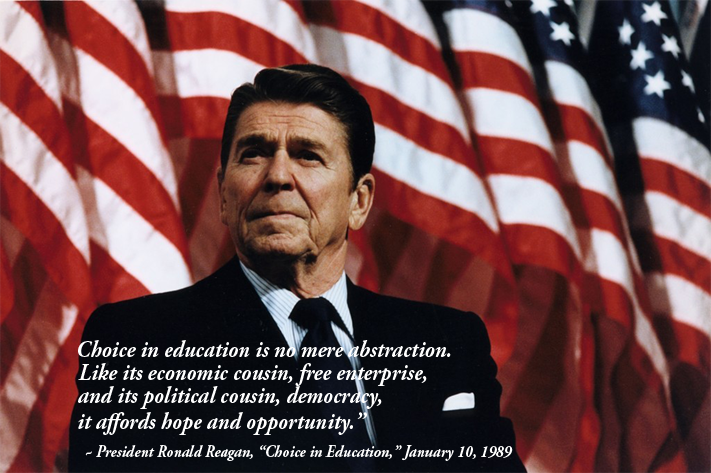
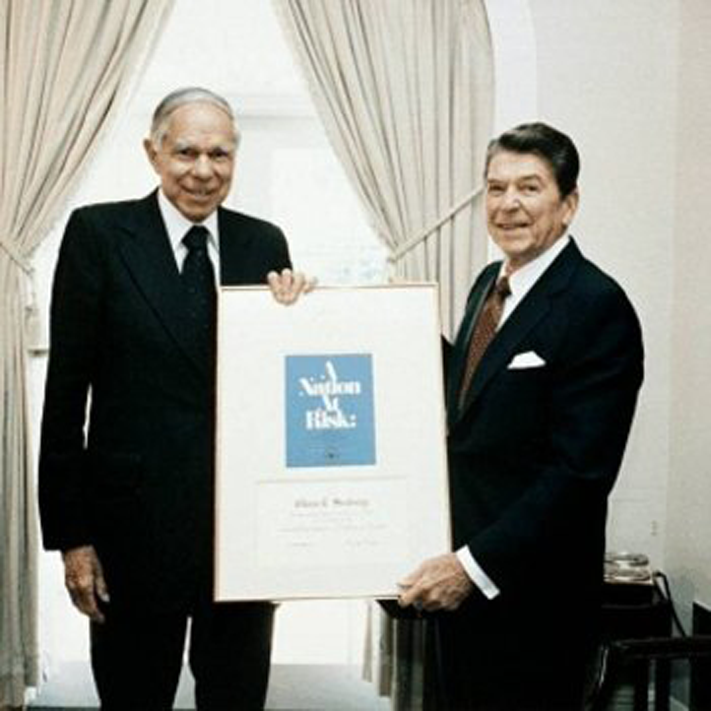
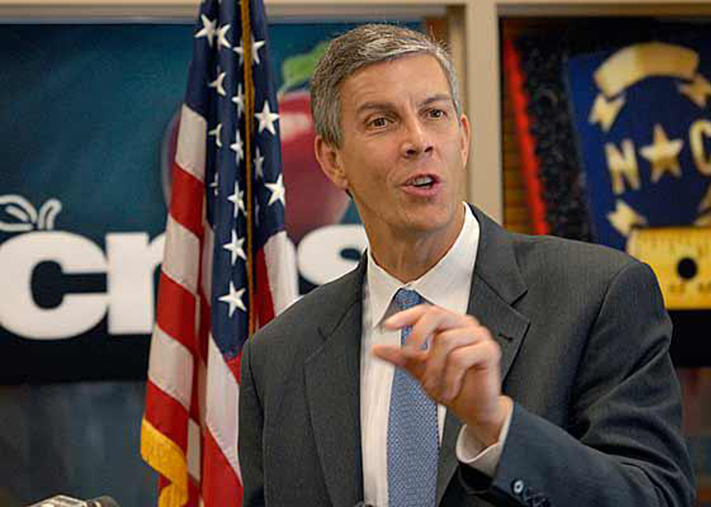
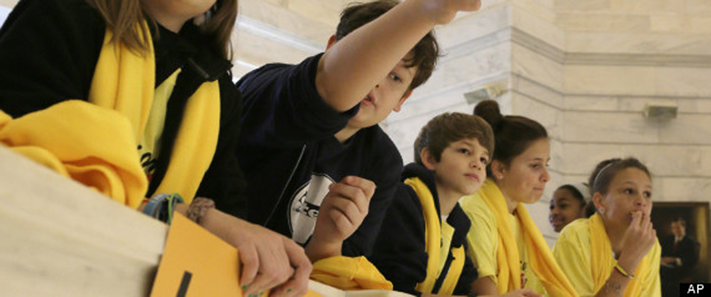

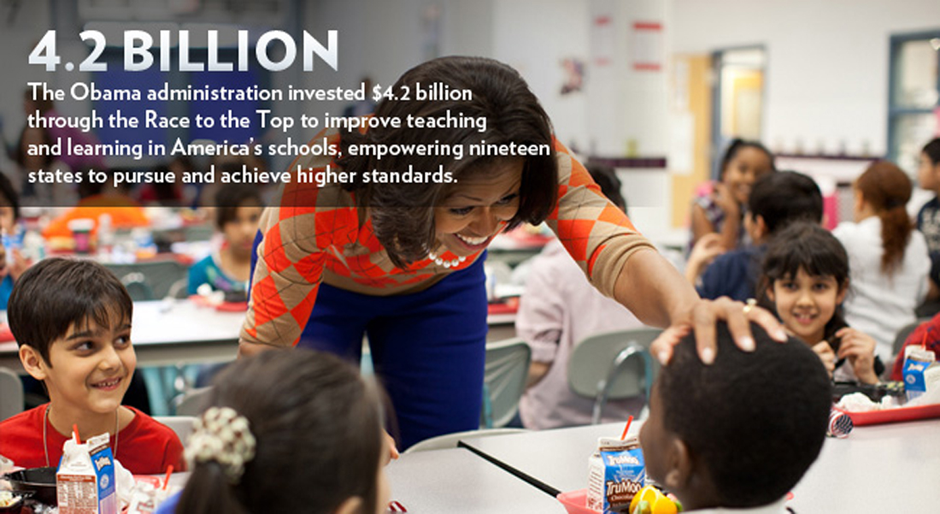
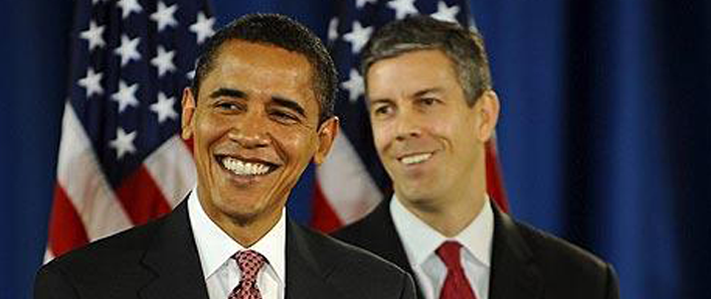











Leave A Comment